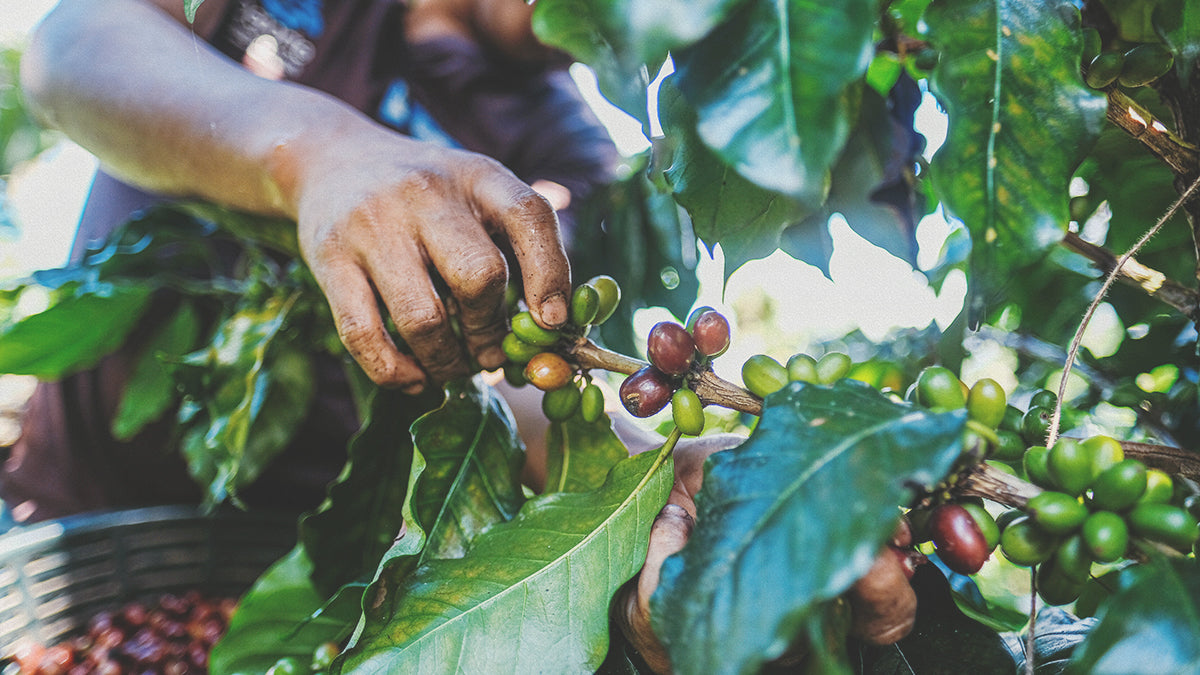Aerobic vs. Anaerobic Coffee Fermentation

Coffee goes through a lot before it hits your mug. Each bean jostling around your bag is the culmination of centuries of hard work. Shoutout to Kaldi, the OG GOAT. From the Arabian Peninsula to the rest of the world, planting, cultivating, harvesting, processing, exporting, importing, roasting, cupping, adjusting, shipping, grinding, brewing, and sipping—your daily cup is no simple feat. Since we couldn't possibly detail the entirety of coffee's journey in one article, we're going to focus on the processing at origin, specifically fermentation.
All coffee is fermented, and it happens naturally and intentionally. Naturally, coffee cherries' high sugar and water content make them ripe (literally) for microorganisms to break down the pulp into cellular energy. Fermentation, when done intentionally and correctly, helps accentuate and fine-tune a coffee. In an interview with Perfect Daily Grind, O'Coffee Post-Harvest Coordinator Carlos Guiraldeli said that fermented coffees have, “distinct flavors, exotic. Refining the sweetness, acidity, and body of these coffees, and adding distinguished sensorial notes.”
Essentially, fermentation (also called “maceration”) can make an impeccable coffee even more so. The mucilage, which is the layer beneath the cherry's pulp and skin, is the target. Fermentation aims to remove this watery-sugary layer and, in the process, alter the coffee's flavor profile. This breakdown ramps up a coffee's acidity, bringing wine-like fruit notes to the forefront.
AEROBIC VS. ANAEROBIC FERMENTATION
There are two main types of fermentation: aerobic and anaerobic. The root, “aerobic,” comes from the Ancient Greek aér (air) and bios (life). New life springs from the presence or absence of air, especially when we're talkin' coffee. The presence of air—aerobic—is more complex and harder to monitor. The absence of air—anaerobic—is easier to manage because you don't have that oxygen variable. While it may seem anaerobic is the way to go, both methods have their distinct upsides.
So, What Is The Difference Between Aerobic And Anaerobic Fermentation?
Aerobic fermentation basically leaves the coffee to its own devices, with only time and temperature being monitored. Freshly picked cherries are gathered and submerged in water in an open-air tank, where they quickly break down over the course 16 – 20 hours. Since the coffee is exposed to more of the elements, close monitoring is essential. Atmospheric microbes and yeasts are drawn to the sugar-rich cherries and can, without proper attention, grow out of control. That, or a rapid increase in exothermic heat generated by the breakdown can impart vinegar-like flavors.
With anaerobic fermentation, the same initial process applies, but the fermentation tanks are sealed tight so that no oxygen gets in. The prominent gasses present in anaerobic fermentation are nitrogen and carbon dioxide, both of which are vented as necessary. In these conditions, the coffee cherries undergo a metabolic process called glycolysis, in which energy is synthesized from glucose. This energy helps break down the mucilage over the course of up to four days, rather than in under one. This extended breakdown time is not only easier to manage but imbues the coffee with distinct flavors and lactic acids, according to Barista Magazine contributor Katrina Yentch.
There's specialty coffee, and then there's specialty coffee. Aerobic- and anaerobic-fermented coffees help push our centuries-old industry into the future. And that's part of what makes coffee so fun—to work in, to drink, to explore. Producers and roasters have found ways to revolutionize a simple seed over and over again, making it feel brand-new with every iteration. We'd agree, there's nothing like a classic, but there's also nothing like tasting something that sounds out of this world. In our everyday, there's not much time to stop and look. Specialty coffee helps us do just that. It takes work to make a delicious cup, and in that time, there's time to look and learn and fall in love all over again.

Leave a comment